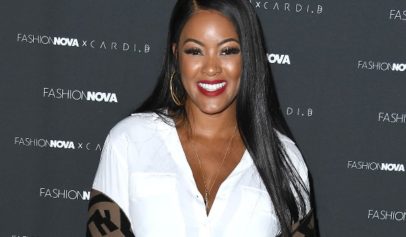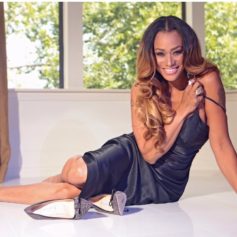Last month a British talk show “Lorraine” proclaimed 18-year-old Florence Colgate as Britain’s most beautiful face. Carmen Lefevre from the University of St. Andres perception laboratory in the School of Psychology was quoted: “Florence has all the classic signs of beauty. She has large eyes, high cheekbones, full lips, and a fair complexion.”
Without seeing a picture of Florence and basing her appearance on Lefevre’s description alone, the blond, blue-eyed woman could have been a black woman—or could she? That’s the real question.
“Researchers came up with the most attractive length and width ratios between features. On length, the distance between a woman’s eyes and mouth should be just over a third or 36%, of the overall length of her face, from hairline to chin. For width, they calculated that the space between a woman’s pupils should be just under half, or 46%, of the width of her face from ear to ear,” according to BBC News.com.
Interesting enough, the study only used white women and the researchers admitted their findings could not be used for any other group.
As barbaric as this sound, the dimensions for the perfect face are still being touted as the threshold for which the standard is being held, in America as well.
To begin, the Earth is covered with varied women, not just white women. So, why would researchers tackle only one group of women? The premise is flawed, therefore the findings are too.
Secondly, black women generally have more pronounced facial features which are characteristically dissimilar from their white counterparts. As such, how can two different groups of women aesthetics begin to compare? And if the two can’t be compared, how can they “compete” for the standard all-American beauty that seemingly won’t die?
A standard implies the norm. We’re light years from the days where a specific race looks a specific way, hence Florence’s aforementioned description.
According to CNN.com, “Some trend-watchers and researchers say the increased diversity and mixing among races is shifting the population away from a standard of beauty for women that’s dominated by white faces. Others agree that it’s happening, but say it’s driven by mass media’s desire to reach a more diverse audience – or sell products to it.”
The latter statement struck a chord the most. In a moment where solid credence could have been given towards squashing the Neanderthal backwards thinking that whites are bar none more beautiful, the statement suggests consumers buy products based on who is pitching the product, not beautiful people. Further suggesting, whites are still superior in looks, but brown people need pacification to get items moving. So, black and brown people are thrown in the mix for good measure.
Per Allure Executive Editor Kristin Perrotta, “There was a dramatic shift in what people considered the beauty ideal in America now,” she said. “We went from the blond hair, blue-eye, typical all-American girl like Christie Brinkley in 1991, to this dark, sultry Angelina Jolie ideal in 2011.”
While Perrotta didn’t mention a brown or black person, the greater point is beauty cannot be defined by a standard and is in no way objective. Our surroundings, our environment, our culture all have bearings on the way we think and how we conclude. From the clothes we decide to wear, from the foods we crave, from the faces we determine beautiful to us…individually, beauty is indeed in the hands of the beholder.
How do you determine who is beautiful to you? What do you make of an all-American beauty?
By Deidre White


